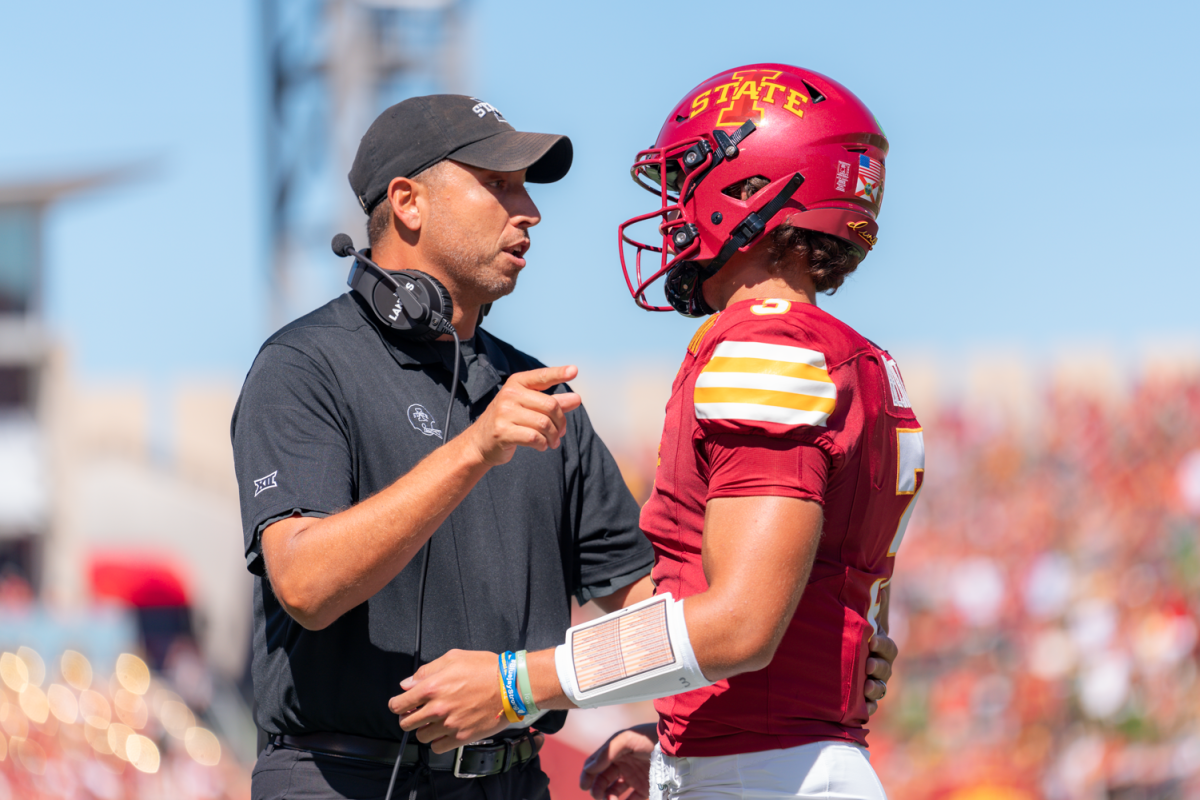Class explores past, present, future in China’s, India’s economies
November 6, 2013
How is the term “made in China” affecting developments in America? Why is economic growth in India only affecting a small percentage of their society? Is the economy of a communist state more stable than the economy of a democracy?
A course that strives to answer and discuss these questions has appeared in the official catalog listings and billboards.
The Economies of China and India course, offered in spring 2014, will deal with the economies of the two major global players as well as important factors and recent developments, said Joydeep Bhattacharya, professor in economics.
Bhattacharya said that events in China or India tend to affect the rest of the world.
“An example: If China decided not to import agricultural products from the U.S. anymore, it would also have a major, possibly devastating impact on Iowa,” Bhattacharya said.
The course is not entirely new. Bhattacharya and Hongli Feng Hennessy, associate professor in economics, created it three years ago, starting out as an experimental course.
“Now the x-status is removed, and we will appear in official catalog listings as a nonmandatory course,” Hennessy said.
The basic nature of the lectures will not change though, Bhattacharya
said.
“We will, however, receive additional funding from the university that we will use to improve our online section,” Bhattacharya said.
The class is 15 weeks long and will be divided into two equally long parts of about seven weeks. Each part will focus on one of the countries that are basically separated.
“However there will be comparisons and contrasts that we want to discuss, so the topics will definitely overlap at some point,” Bhattacharya said.
Both professors have the advantage of coming from the country they speak about.
“This way we can also incorporate personal experiences,” Hennessy said.
Hennessy covers the China section of the course.
“I often show my daughter how many of the products in our kitchen come from China. The country has become the factory of the world,” Hennessy said. “That comes with a price though. Chinese labor is very cheap and workers are exploited there, which is something that my parents and a lot of my friends had to suffer from.”
Bhattacharya left India in 1991, right at the time when the economic growth of the country began.
“The situation has vastly improved,” Bhattacharya said. “In the 1960s and 70s, Indians were doing well despite the government, now they do well because of the government.”
Bhattacharya still visits India every year.
When compared to each other, China and India share their tremendous economic growth within the last few decades, Hennessy said. However, both countries differ in their political contexts and structures.
“In China, there is no democracy, so the government could always find an excuse to take away somebody’s wealth,” Hennessy said.
The influence and control in India isn’t that big, but the economy there has its own problems to deal with.
“It’s a very messy democracy, where change takes a long time to be processed and done,” Bhattacharya said of India. “And even though the situation is much better than it used to be, there is still a large gap between the rich and the poor.”
Because of the global significance of both China and India, the interest for the Economies of China and India course has been big in the past years. More than 60 students enrolled in the course last spring. The feedback has been overwhelmingly positive, Bhattacharya said.
“Students are now coming to me a year before class and ask me when they can enroll,” Bhattacharya said.
Deepak Premkumar, senior in economics, took the class in spring 2013.
“It was one of my favorite classes I took at ISU,” Prekumar said. “Most of the economic classes depend on large amounts of theory and math, but that wasn’t the case here. It is very informative and accessible.”
As a second-generation immigrant from India born in Ames, Prekumar said he was very interested in learning more about the history and cultural values of India.
“I hope to work in developing countries and help solving some of their problems,” Prekumar said. “The class helped me bring a broader context to the issues in these countries.”
The focus group of the course is not limited to economy students only; in fact, they have been the minority in the past.
“Basically, the topic of Chinese and Indian economies is important to any student, who wants to work for a company with a multinational focus,” Bhattacharya said. “I assume that there are at least 50 companies in Iowa that have direct business contacts to China and India, and the companies, who haven’t outsourced resources to these countries yet, are at least considering it.”
Hennessy said it is important to have a perspective on Chinese economy because a lot of students’ future employers will be large international companies from China.






